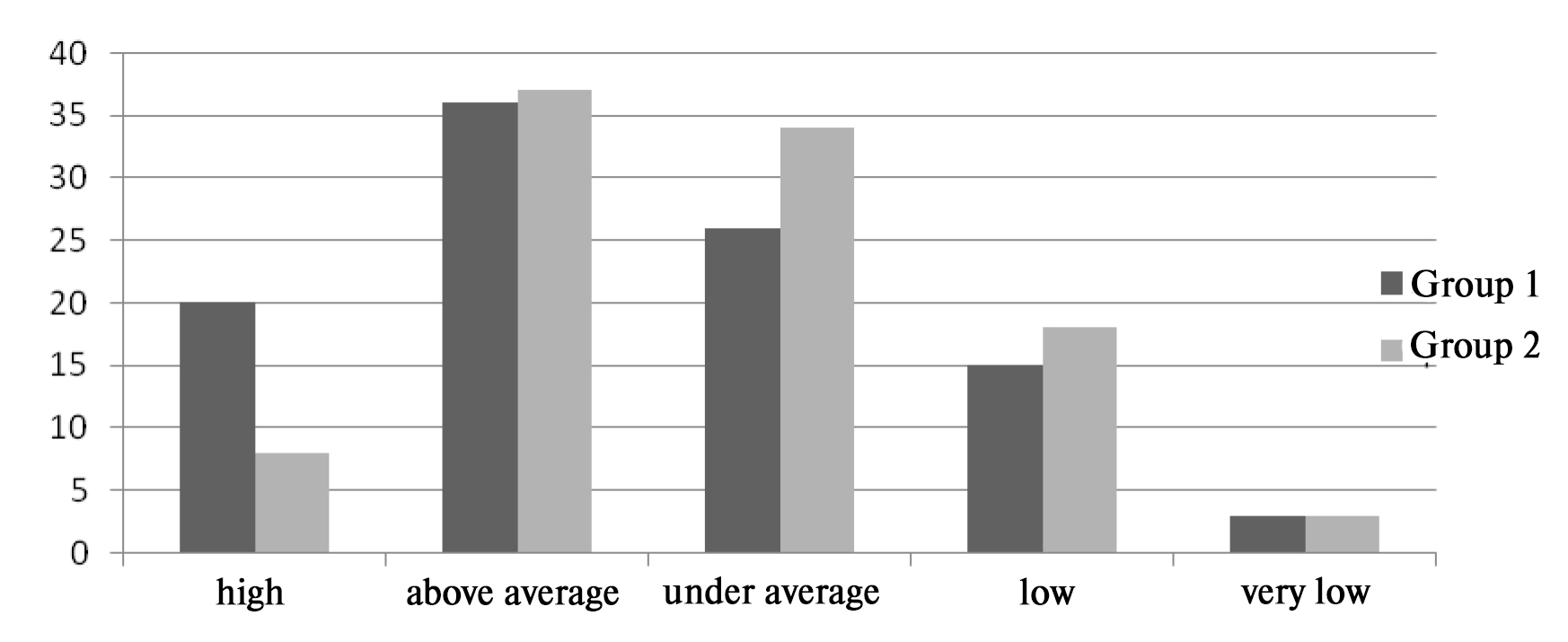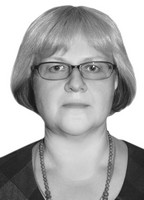Life-purpose orientations of students of different Physical Education specializations
Фотографии:
ˑ:
Associate Professor, PhD T.F. Vostroknutova1
Associate Professor, PhD S.I. Vostroknutov1
Dr.Hab., Professor N.Y. Erofeeva1
1Udmurt State University, Izhevsk
Keywords: life sense, students’ life-purpose orientations, life conciseness, timed prospects.
Background. It is commonly acknowledged today that due values and senses need to be formed in a professional training process both for success in professional career and to form a basis for life-purpose orientations of the future professionals. The D.A. Leontiev Life-Purpose Orientations test methodology [3, 5] gives the means to rate intensity of the meaningfulness of life (ML) on the whole and specific life-purpose orientations in particular including life goals, focus on emotional colouration of life, and the internality degree in attitudes to the own life and freedom of choice.
Objective of the study was to identify the contents and structure of the life-purpose orientations in university students.
Methods and structure of the study. Subject to the study were the following two groups of students: Group 1 composed of 30 bachelors majoring in Physical Education (Competitive Training in Vocational Sport profile); and Group 2 composed of 30 bachelors majoring in Physical Education (sport-unspecific General profile). The study was designed based on the Russian version of Life Purpose test known locally as the D.A. Leontiev Life-Purpose Orientations (LPO) test.
Study results and discussion. The primary test data were processed and grouped by the following 5 key indices: general meaningfulness of life (ML); Goals in life (nearest and ultimate goals); Life Satisfaction index (authenticity and non-alienation); Self-actualization satisfaction; Life/ Freedom of Choice Internality (own life-control and event-control ability degree).
Given on Figure 1 hereunder are the General meaningfulness of life (ML) indices for the sport-specific and sport-unspecific groups of the subjects.

Figure 1. Distribution of the General meaningfulness of life (ML) indices for the sport-specific Group 1 (majoring in Competitive Training in Vocational Sport) versus the sport-unspecific Group 2 (General profile), in %
Having checked the statistical distribution hypothesis using c2-criterion, we found, as demonstrated on Figure 1, normal distribution of the General meaningfulness of life (ML) index, with both of the Groups showing domination of the average values varying up and down from the average (62% for Group 1 and Group 2). It is worth mentioning that Group 1 leads in high values (20% in Group 1 versus 5% in Group 2). Distribution in the lower end of the values (that is generally assumed as indicative of the inadequate degree of perception of own life goals, intensity of life and self-actualization) was found opposite: 33% in Group 2 versus 18% for Group 1. These data give the reasons to believe that education and training in the sport-specific Group 1 (majoring in Competitive Training in Vocational Sport profile within the academic Physical Education discipline) is more intensive in the sport domain and thereby indirectly improves the personal life intensity including the life being richer in senses and facilitating self-identification of the trainees.
The meaningfulness of life (ML) test data for Group 1 showed no key distribution trend versus the Group 2 data that revealed the trend for the right-hand asymmetry (domination of the low and under average rates). It may be indicative of inadequate meaningfulness of life within the frame of the core educational activity. We tend to assume that this dissatisfaction is due to the vocational identification falling in conflict with the actual personal activity.
The meaningfulness of life (ML) index is composed, first, of the specific indices of the temporal structure of the consciousness (goals in life, satisfaction and self-actualization) and, second, of the personality control/ regulation indices related to own life control ability. Given in Table 1 hereunder are the statistically processed empirical data for both of the Groups.
Table 1. Descriptive statistical indices (mean and standard deviations) showing the temporal structure of consciousness in Group 1 versus Group 2, Х±σ
|
Temporal structure of consciousness |
Goals in life (future) |
Satisfaction (present) |
Self-actualization (past) |
|
Group 1 |
2,09±5,5 |
28,77±7,5 |
19,68±4,0 |
|
Group 2 |
31,14±6,1 |
28,37±5,8 |
18,81±4,0 |
Test of the statistical hypothesis using the Mann-Witness U-criterion found no statistically significant differences in the group data. Content analysis of the data arrays gives the reasons to find the so-called “mature” structure of consciousness dominated by focus on the future with relatively high degree of satisfaction with the present and intentional mental ignoring of the past results.
Comparative statistical analysis of the test data referring to the temporal structure of consciousness gives reasons to assume that the university students’ future prospects, plans and intentions are not clear enough to themselves. It is the dissatisfaction with the present found in the Group 2 students that heavily contributes to reduction of the General meaningfulness of life (ML) index.
|
Statistical indices
|
Subjects
|
||
|
|
Group 1
|
Group 2
|
|
|
Х
|
21,05
|
18,81
|
|
|
s
|
3,8
|
4,0
|
|
Table 2. Descriptive statistical indices (mean and standard deviations) for the personality control/ regulation functions in the Groups
The descriptive statistical indices (mean and standard deviations) for the personality control/ regulation functions of the consciousness (Table 2) are generally characteristic of the individuals identifying themselves as strong personalities capable of controlling their own life flow. The study data show statistically significant differences (as verified by the Mann-Witness U-criterion (U=2254; р<0.05) in favour of the Group 1 students confirming their higher life tonus as verified by their attitudes to own life-control-and-design abilities that give them the means, as they believe, to control it as required by the individual goals and expectations.
The General meaningfulness of life (ML).index is indicative of the high-level individual activity of the Group 1 students manifested in their focus on the timed professional prospects, with reasonable perception of the actual life as emotionally full-coloured and filled with senses; and with the ability to “step over” the accomplishments and focus on the new ones. The high life statuses of the students are manifested in their self-identifications as strong personalities capable of designing their own lives as required by the individual goals and life senses. The study data provide an indirect evidence of their professional education process being focused and emotionally coloured.
The study data for Group 2 versus Group 1 give the reasons to assume that the Group 2 professional education process is inadequately designed or mismanaged. This may be the reason for their very low degrees of satisfaction with the present, shortage of purposes, unclearly visible timed prospects of the personal and professional accomplishments, and dominant pessimistic attitudes to their own life-control abilities.
Conclusion. The study data and analyses demonstrated the following:
- Group 2 (sport-unspecific General profile) students showed the domination of the low General meaningfulness of life (ML) indices versus the higher General meaningfulness of life (ML) indices for Group 1 albeit showing no clear distribution trend;
- The sport-specific Group 1 (majoring in Competitive Training in Vocational Sport) students were tested with high purposefulness of life, interest in and emotional intensity of life and self-actualization satisfaction that provide a basis for positive perceptions of own life-control abilities and constructive life settings;
- The sport-unspecific Group 2 (General profile) students were tested as unclear in defining timed life prospects, showing expressed negative attitudes to the present and mindsets dominated by the lack of confidence in the own life- control and life-design abilities.
The study data and analysis make it possible to speak about different psychological mechanisms of such phenomenon as own general meaningfulness of life characteristic of a certain personality development level, individual motivational maturity, mature self-identification positioning and individual preparedness for taking responsibility for own life flow. In the university age these psychological parameters are or may be at the active manifestation, evolution and formation stage.
References
- Klimov E.A. Psikhologiya professionalnogo samoopredeleniya [Psychology of professional self-determination]. Moscow: Akademiya publ., 2004, 304 p.
- Leontiev A.N. Deyatelnost, soznanie, lichnost [Activity, consciousness, personality]. 2nd ed. Moscow: Politizdat publ., 1977, 304 p.
- Leontiev D.A. Psikhologiya smysla: priroda, stroenie, dinamika [Sense psychology: nature, structure, dynamics]. Moscow: Smysl publ., 2007, 512 p.
- Frankl V. Chelovek v poiskakh smysla [Man's search for meaning]. Moscow: Progress publ., 1990, 220 p.
- Available at: http://azps.ru/testes/testes_fpi.html
Corresponding author: vostroknutova.tf@mail.ru
Abstract
Reported in the article are the findings of a practical study of the life-purpose orientations of the students of different Physical Education specializations based on the D.A. Leontiev Life-Purpose Orientations test. The tests generated the general life-purpose rates indicative of high activity of the students majoring in Competitive Training in Vocational Sport profile focused on timed professional careers with the ability to step over the accomplishments to attain new and even unclear timed goals in the personal life and professional careers. The study findings may be interpreted as an indirect evidence in support of the subjective and emotional intensity of the professional education activity of the students majoring in Competitive Training in Vocational Sport profile; with most of the students majoring in General profile (sport-unspecific) tested with inadequate consciousness of the education (and, ideally, professional education) activity. The study findings may be beneficial for the professional education process design for Bachelors of Physical Education.



